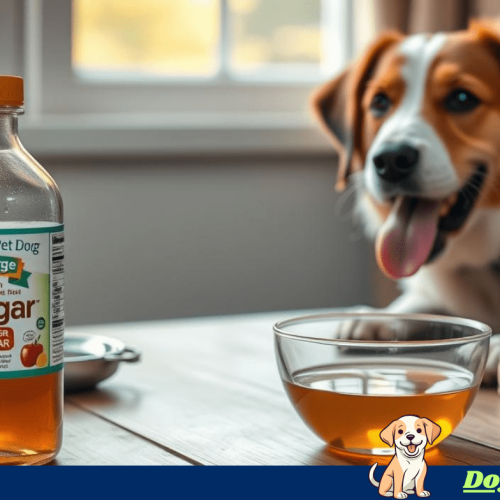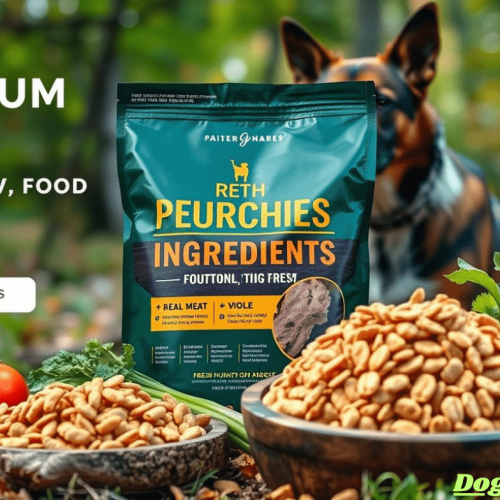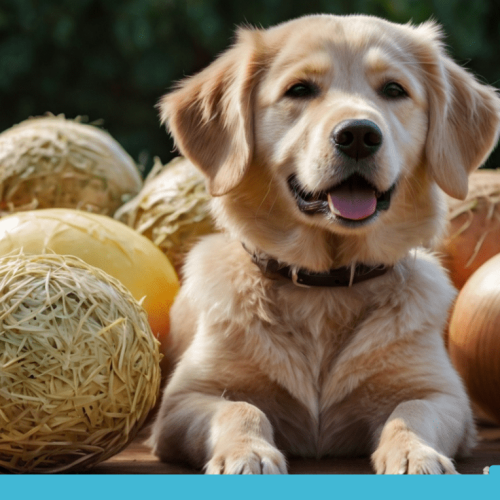Table of Contents
ToggleDog Breeding Contract: Essential Guidelines and Tips
Offered as a co-ownership dog breeding contract, this is also an excellent chance for breeders old and new. These contracts help detail the duties of its co-owners. They may also specify breeding practices., or divide income as a dog progresses through its show career. You must understand the basics of these agreements to protect your interests and those of your breeding partners doing business with you.
Defining the terms properly when entering any co-ownership program is very important. Contracts between dog owners can regulate everything from each party’s breeding rights to how profits (or losses) are split when puppies are sold.
Essential factors include who pays for vet care, how many litters they may have in a year, & the exact circumstances under which ownership is transferred.
It’s crucial to be well-informed about the implications of co-ownership agreements and know how to utilize legal options. Whether you are co-owning a dog with a kennel like Strauss Haus Shepherds or a breeder such as Old Bulldogs, it’s essential to have all terms and conditions clearly defined to prevent future issues.
Key Takeaways
- Essential terms include breeding rights and revenue sharing.
- Contracts should detail veterinary expenses and litter per year.
- Legal ramifications and dispute resolution are critical.
Essentials of Dog Breeding Contracts
Dog Breeding Contract
All parties involved should sign dog breeding contracts so that everyone knows their rights and duties. Partnership terms, breed-based provisions, and health verification provisions should be carefully considered to protect the canine well-being and sellers.
Defining Partnership Terms
It is crucial to be clear about the terms you will set up in Partnering. This clarity will provide a sense of security and confidence in understanding the role and responsibility of each function within a breeding contract between primary breeders and co-owners.
Detail who is responsible for feeding, vet visits, and financial obligations. Do not forget to get the actual duration of the contract and conditions for its termination or prolongation.
Detail how disagreements will be settled to maintain a strategic distance from future clashes.
Breed-Specific Considerations
Feature breed-specific clawbacks in your contract. Each breed comes with its own fine print in the form of characteristics and specific health problems to which they are predisposed. Additionally, indicate any special care or training needs the breed requires.
Underline the necessity of adding provisions about the dog’s appearance and breeding of good quality. It’s essential to list any breed-specific genetic trial required to ensure the puppies’ health.
Health Testing and Veterinary Care
Enforce comprehensive health examinations annually and regular veterinary care. All necessary genetic trial should be conducted before breeding to avoid passing on hereditary conditions.
Vaccinations, deworming, and regular check-up schedules. Put in writing who will pay vet bills and how often health evaluations are required. Both parties must acknowledge a respectable level of care in terms of health and welfare for the sake of their dog.
Ownership Rights and Responsibilities
Dog Breeding Contract
When entering into a co-ownership dog breeding contract, it is critical to understand each party beach party’s specific rights & responsibilities. Key topics involve co-ownership structure, decision-making processes, and financial obligations.
Co-ownership Structure
A typical contract to share ownership for dog breeding is called a co-ownership, which generally stipulates how partial ownership rights are divided between the breeder and another party. Until the terms of breeding contracts are met, a breeder typically holds full rights to breed and register. Contracts may also specify who is to be scheduled where for breeding.
You must lay down precisely who is doing what regarding dog welfare and breeding. You also need to establish the essential condition of co-ownership, how long it will last, and what the puppy can be bred on and, in some cases, cannot, such as spaying/neutering.
Decision-Making Processes
It will prevent future disputes since the decision-making processes in co-ownership agreements should be very clearly defined. Decisions on breeding, healthcare, and life are critical for the dog and must be made with all parties. The College must state clearly the procedure for important health decisions, study course selection, and show participation.
Therefore, communication protocols should be implemented to guarantee the owner is updated with information on the dog’s escape from traffic (to name one medical problem). Memes that work well as templates are things like Hayabusa and Not Su-Hima. This can be included by establishing routine check-ins and defining what kinds of situations will require joint decision-making.
Financial Obligations
Financial obligations in a co-ownership dog breeding contract are crucial to defining who bears the costs associated with the dog’s care and breeding. This includes routine veterinary care, breeding expenses, transportation, and boarding fees.
The contract should stipulate how profits from breeding or showing the dog are shared. Penalties for defaulting on payments or failing to satisfy responsibilities can also be detailed. For instance, breaching the contract by spaying the dog prematurely could solution in significant financial penalties & legal fees.
Clearly outlining these financial terms helps both faction understand their monetary responsibilities & liabilities.
Puppy Sales and Revenue Sharing
Dog Breeding Contract
The crucial components of a co-ownership dog breeding arrangement are how puppies are priced, profits are distributed, and breeding program goals are achieved.
Pricing Strategy
First, you must assess the market trends and determine your breeding dog. The price of a Labradoodle pup is influenced by several factors, including the dog’s lineage, health clearances, and show titles. Accurate pedigree documentation is enormous.
You can also factor in demand. Strong demand for a specific breed or lineage can equal raised prices. Make sure all your breeding costs (including difficulty, time, and potential loss of stock) are covered by any price you decide upon, or consider incorporating a non-refundable deposit due when reservations are made from serious buyers.
Profit Distribution
How profit-sharing works in co-ownership agreements will depend on the details of your contract. Usually, earnings are shared with the co-owner and breeder when there is a dual ownership scenario. They’re right—and some agreements, like those from Old Bulldogs, require half the purchase price to be handed over to the co-owner.
Establish profitability sharing specifics and agreement price split regarding veterinary care, advertising, etc. Ensure you are keeping an eye on the terms established in the agreement so that both parties can benefit from what they bring to it.
Breeding Program Goals
Align puppy sales with your broader breeding program goals to ensure long-term success. Objectives include enhancing specific traits, maintaining genetic diversity, or adhering to specific breed standards.
Each litter should advance these goals. This may involve selective mating practices and health testing. Some contracts, like those from Strauss Haus Shepherds, ensure that all breed/show quality pups sold by the co-owner are on a co-owned contract, safeguarding the integrity of the breeding program.
These goals will help maintain your program’s reputation and attract dedicated buyers.
Contract Duration and Dispute Resolution
When entering a co-ownership dog breeding contract, it is critical to understand the terms related to how long the consistency lasts & what steps can be taken if disputes arise. Clarifying these points can help prevent future conflicts and makesure a smooth partnership.
Termination Clauses
Termination clauses lay down the conditions under which the agreement may cease. Often, this includes specific scenarios such as breach of contract, health issues that prohibit breeding, or mutual agreement.
For example, the contract might be voided if you desex your dog too early. Wholesome status terminations necessitate vet evidence. Ending because one party was in breach may come with monetary consequences or the potential for legal ramifications.
Explicitly defining this in the contract gives both parties a clear understanding of what is expected of them and what happens if they do not deliver according to expectations. Other significant negotiated clauses to ensure fairness and enforceability
Mediation and Legal Recourse
Mediation should often be the first step in a dispute. It involves a neutral third party helping to resolve conflicts amicably. This method is less aggressive & usually cheaper than going to court.
Other legal recourse options include arbitration, where an arbitrator makes a binding decision, or litigation. If disputes over breeding rights or financial obligations are not resolvable through mediation, court intervention might be required.
Including specific terms about mediation & legal recourse in your contract can save time & money. Make sure to detail the processes, any associated costs, and how decisions will be enforced. This clarity helps both parties appreciate what to expect if a disagreement arises.
Frequently Asked Questions about Dog Breeding Contract
Dog breed co-ownership contracts contain specific clauses that all breeders should understand — details of stud agreements, profit-sharing practices, legal issues and remedies, and breed-specific activity rules.
What are the typical clauses included in a co-ownership dog breeding contract?
Typical clauses often cover the responsibilities of each co-owner, breeding rights, financial obligations, & terms for the dog’s care and living arrangements. They may also address how proceeds from breeding are divided, along with stipulations for the dog’s participation in shows or competitions.
What should be considered when drafting a stud dog co-ownership agreement?
When drafting a stud dog co-ownership agreement, you should consider breeding rights, the time of the contract, and specific conditions for using the stud. It’s also crucial to outline responsibilities for health checks, veterinary care, and how travel costs for breeding will be managed.
How does profit sharing typically work in a dog breeding co-ownership arrangement?
Profit sharing in a dog breeding co-ownership arrangement usually divides the earnings from puppy sales & stud fees. The exact split should be clearly defined in the contract, often reflecting each co-owner’s investment and ongoing contributions.
What legal considerations should be considered for a co-owning breeding dog contract?
Legal considerations include ensuring the contract complies with local laws and regulations. It should also specify who holds the legal ownership of the dog, outline dispute resolution mechanisms, and include clauses for breach of contract. Consulting an attorney experienced in animal law can be beneficial.
How can disputes in a dog breeding co-ownership be resolved effectively?
Including a transparent dispute resolution process in the contract can effectively resolve disputes. This may involve mediation or arbitration clauses. All co-owners must agree on the methodology for resolving conflicts before they arise.
Are there any specific regulations for co-owning and breeding certain breeds like French Bulldogs?
Certain breeds, including French Bulldogs, may have specific breeding regulations set by breed clubs or kennel clubs. These regulations could address health testing requirements, breeding practices, & restrictions on co-ownership. Reviewing these regulations and incorporating them into the co-ownership agreement is essential.
Also Read: Dog Life Info
Stella and Chewy Dog Food
Screen Door with Dog Door











